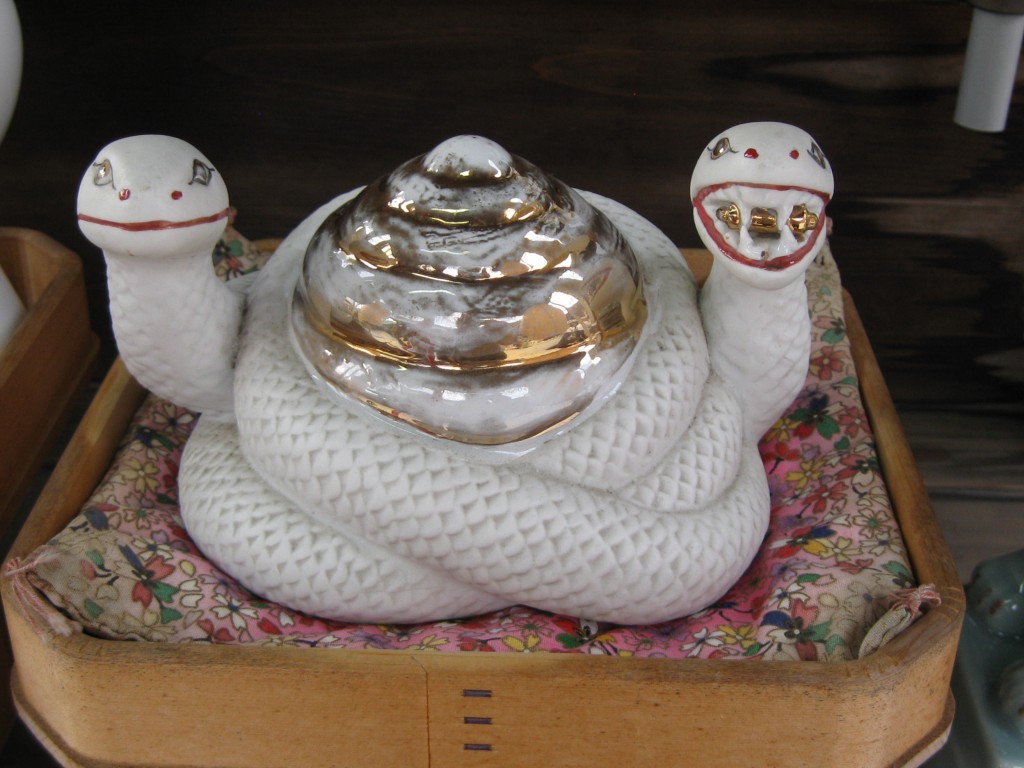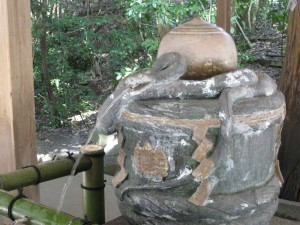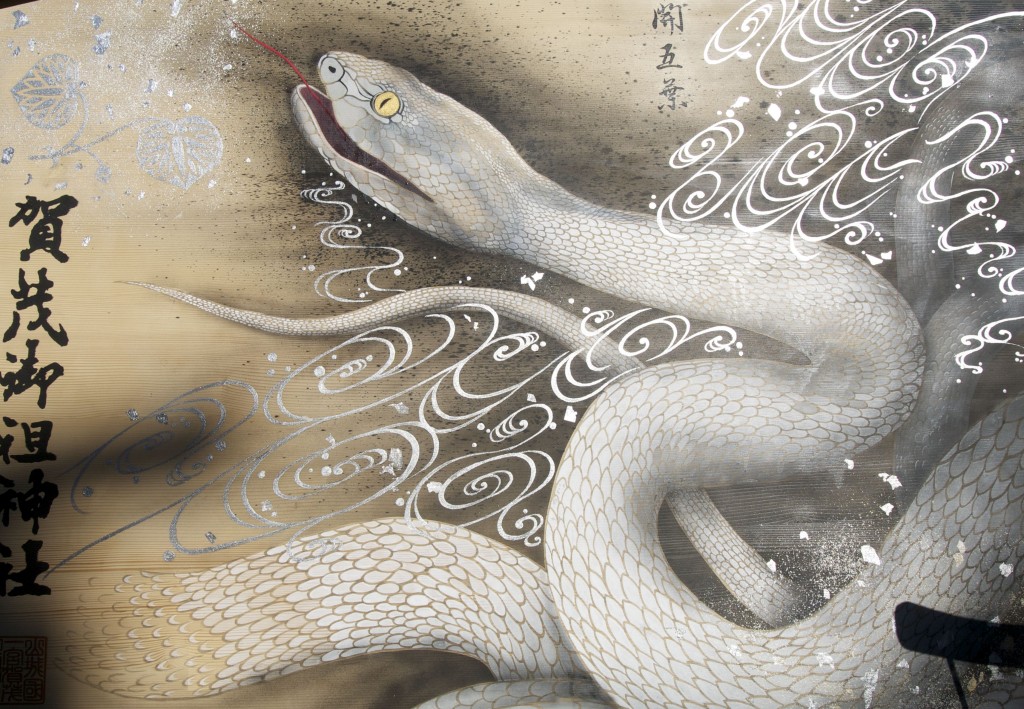
In the face of the worldwide climate crisis, many people are turning to nature religions in the belief that they further environmental policies. Followers of Green Shinto will know that is not necessarily the case. After all, saying sorry to the spirit of a tree is not the same as refusing to cut down the tree, but rather a preliminary to it. It was of great interest therefore that we happened upon an academic paper recently considering the state of snake conservation in Japan. First published in the Herpetological Conservation and Biology Journal, the paper considers the question of whether traditional beliefs about snake divinity had an effect on numbers.
Japan has 33 types of land and sea snake, a third of which are currently threatened with extinction. It’s a shocking statistic. In the past snakes were revered because of their power of ‘rebirth’ in sloughing off their skin. (Regeneration and renewal are key Shinto values.) Because of this ‘magic’, snakes were often associated with great feats of creation or destruction. Miyako Island was said to have been created by a large snake, and Kashima Island is covered with an untouched broad-leaf forest because a kami in the form of a giant snake lived there. (The snake myth of Miwa Shrine has been told previously on Green Shinto, and eggs are put out for the kami snake to this day.)

In their paper the three co-authors, Stanley Fox, Kiyoshi Sasaki and Yoshinori Sasaki, advocate efforts ‘to preserve and revive traditional beliefs’. Given the forces of modernity, that seems like wishful thinking, for as the saying goes you can never return to the past. Rather than artificially reviving outmoded myths, we sorely need to create new beliefs for a scientific age. As Joseph Campbell said, we have to create new myths for a new paradigm. Snakes were once seen as divine, then demonised in the Garden of Eden, and now we need to revive our thinking once again so as to see them for what they are – exemplars of the ability to slough off the old and start afresh, reborn and revitalised.
Oh, and by the way, what is the answer to the question about whether snake divinity was good for conservation? The authors give a resounding Yes. Only after the Meiji Restoration with Westernisation did people’s attitude to the environment change and nature came to be seen simply as a resource. The extinction of the Hokkaido wolf in order to clear the forests for American-style cattle ranches is one egregious example.
The authors conclude: “In Japan, snakes have traditionally been revered as a god, a messenger of a god, or a creature that brings a divine curse when a snake is harmed or a particular natural site is disturbed. These strong beliefs have discouraged people from harming snakes and disturbing certain habitats associated with a snake god. …. The erosion of tradition is extensive in modern Japan which coincides with increased snake exploitation, killing, and reduction of habitat.”

